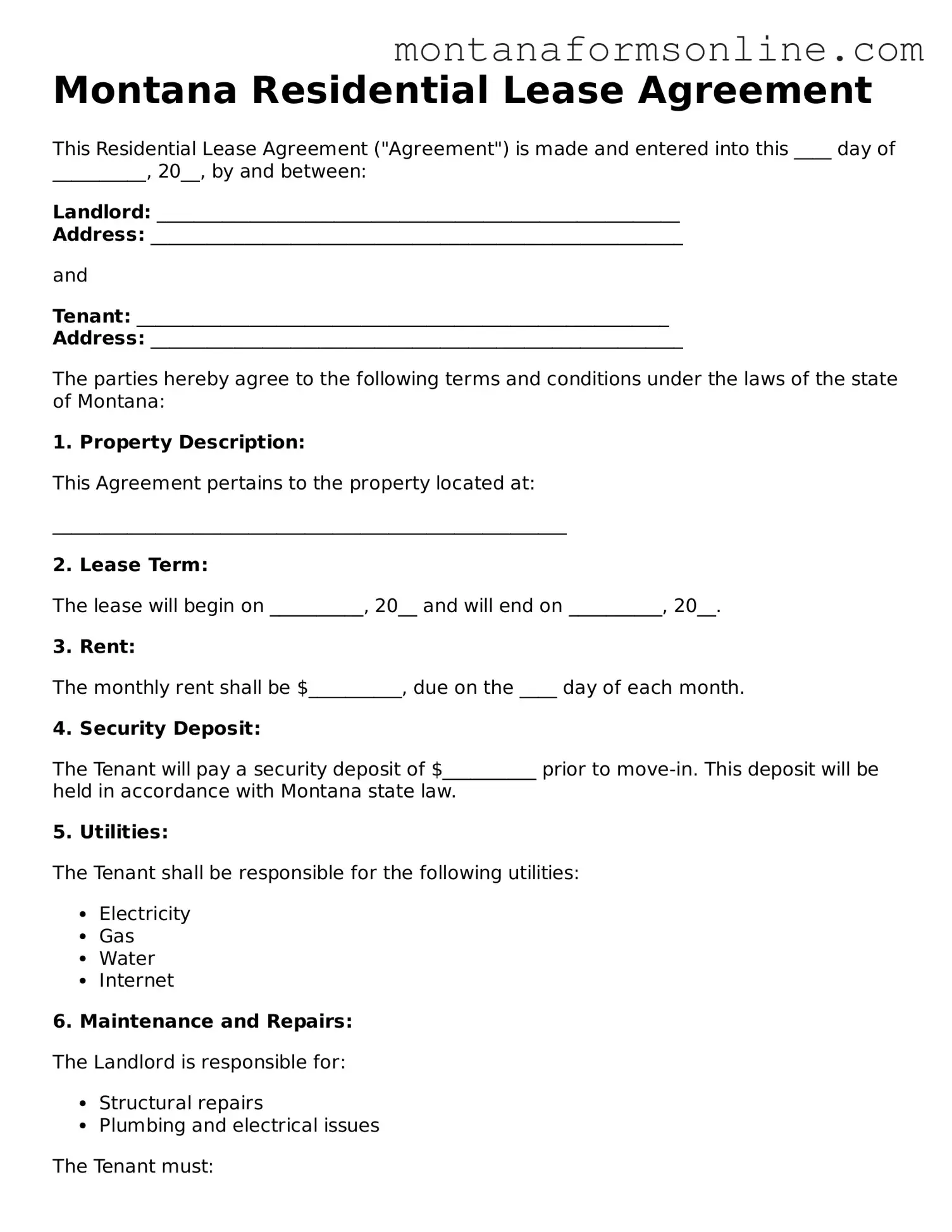Montana Residential Lease Agreement
This Residential Lease Agreement ("Agreement") is made and entered into this ____ day of __________, 20__, by and between:
Landlord: ________________________________________________________
Address: _________________________________________________________
and
Tenant: _________________________________________________________
Address: _________________________________________________________
The parties hereby agree to the following terms and conditions under the laws of the state of Montana:
1. Property Description:
This Agreement pertains to the property located at:
_______________________________________________________
2. Lease Term:
The lease will begin on __________, 20__ and will end on __________, 20__.
3. Rent:
The monthly rent shall be $__________, due on the ____ day of each month.
4. Security Deposit:
The Tenant will pay a security deposit of $__________ prior to move-in. This deposit will be held in accordance with Montana state law.
5. Utilities:
The Tenant shall be responsible for the following utilities:
- Electricity
- Gas
- Water
- Internet
6. Maintenance and Repairs:
The Landlord is responsible for:
- Structural repairs
- Plumbing and electrical issues
The Tenant must:
- Notify the Landlord of any required repairs
- Keep the property clean and in good condition
7. Lease Termination:
The Tenant may terminate this Agreement by providing a written notice of ____ days prior to the end of the lease term.
The Landlord may terminate this Agreement under the conditions specified by Montana law.
8. Governing Law:
This Agreement shall be governed by the laws of the state of Montana.
IN WITNESS WHEREOF, the parties hereto have executed this Residential Lease Agreement as of the day and year first above written.
Landlord Signature: ____________________________________
Date: ___________________
Tenant Signature: ____________________________________
Date: ___________________
